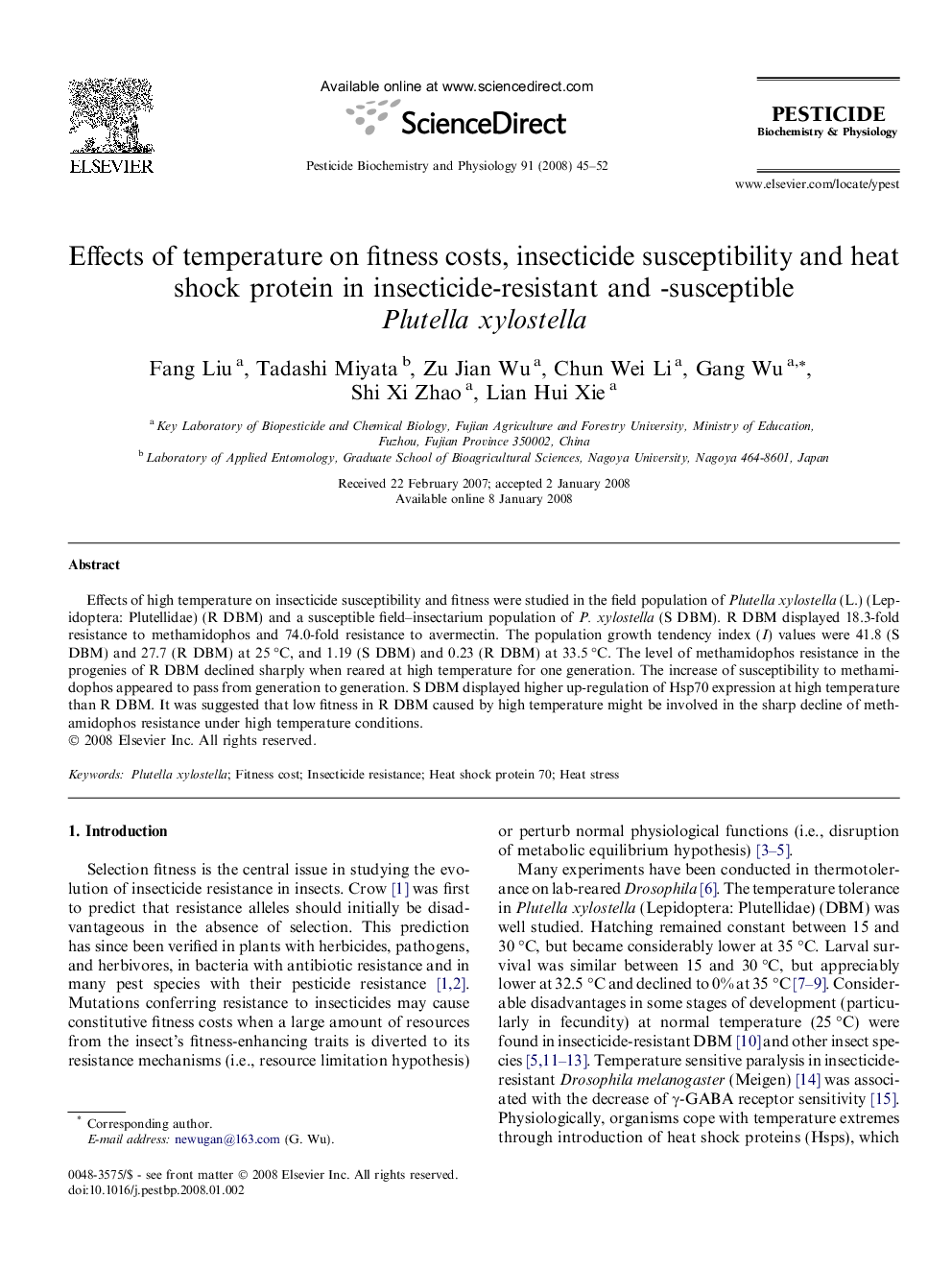| Article ID | Journal | Published Year | Pages | File Type |
|---|---|---|---|---|
| 2009888 | Pesticide Biochemistry and Physiology | 2008 | 8 Pages |
Effects of high temperature on insecticide susceptibility and fitness were studied in the field population of Plutella xylostella (L.) (Lepidoptera: Plutellidae) (R DBM) and a susceptible field–insectarium population of P. xylostella (S DBM). R DBM displayed 18.3-fold resistance to methamidophos and 74.0-fold resistance to avermectin. The population growth tendency index (I) values were 41.8 (S DBM) and 27.7 (R DBM) at 25 °C, and 1.19 (S DBM) and 0.23 (R DBM) at 33.5 °C. The level of methamidophos resistance in the progenies of R DBM declined sharply when reared at high temperature for one generation. The increase of susceptibility to methamidophos appeared to pass from generation to generation. S DBM displayed higher up-regulation of Hsp70 expression at high temperature than R DBM. It was suggested that low fitness in R DBM caused by high temperature might be involved in the sharp decline of methamidophos resistance under high temperature conditions.
